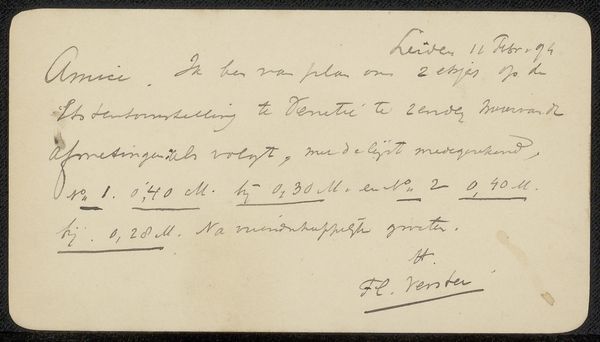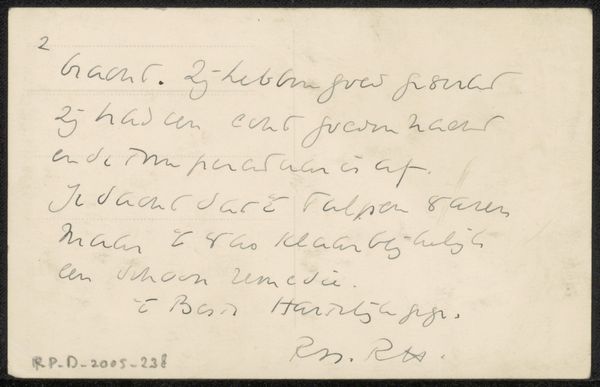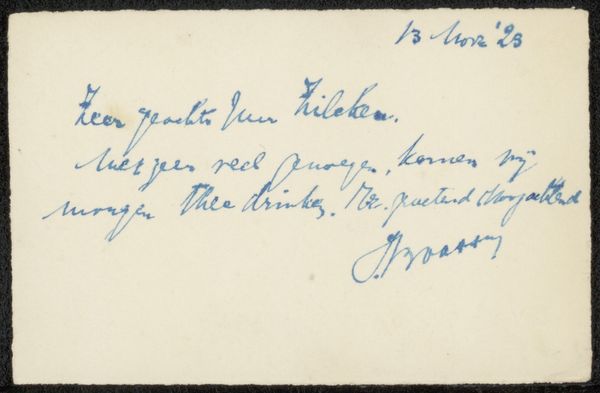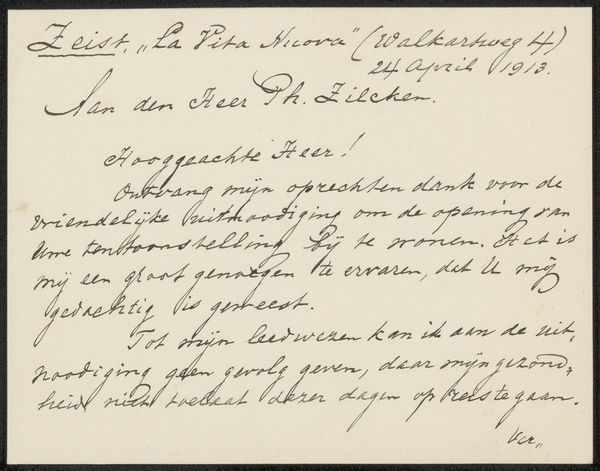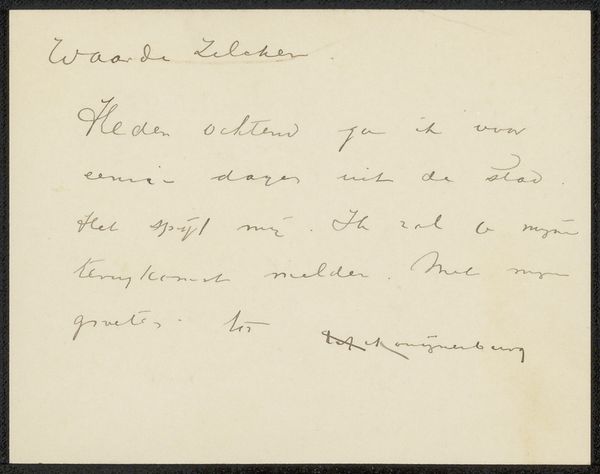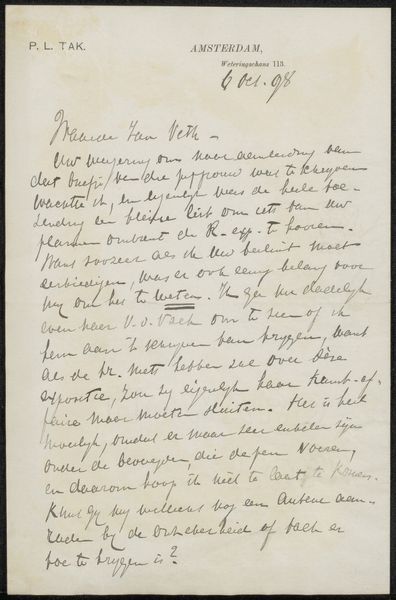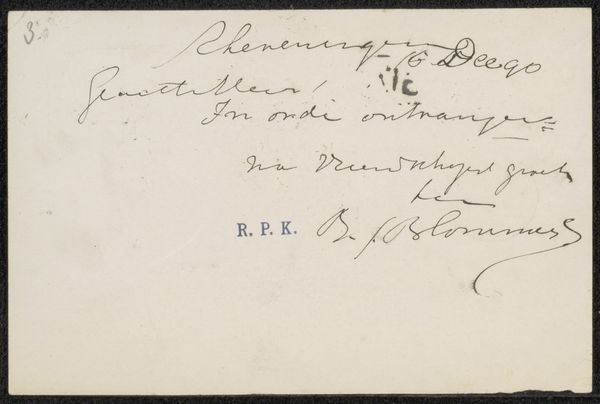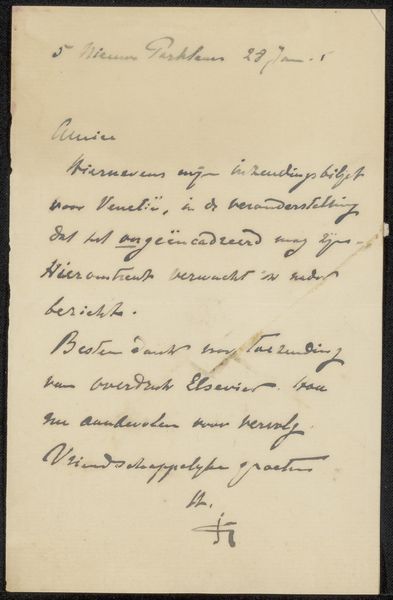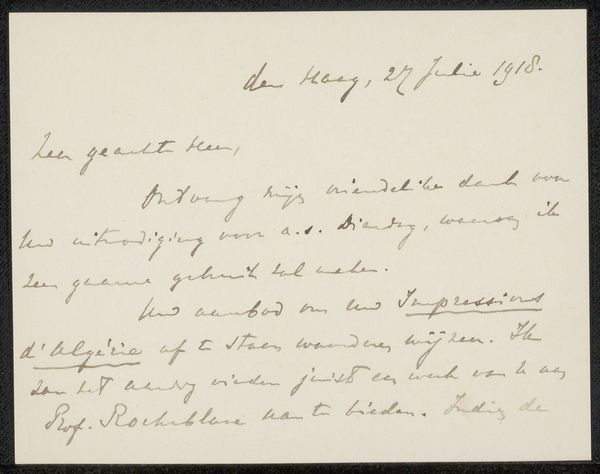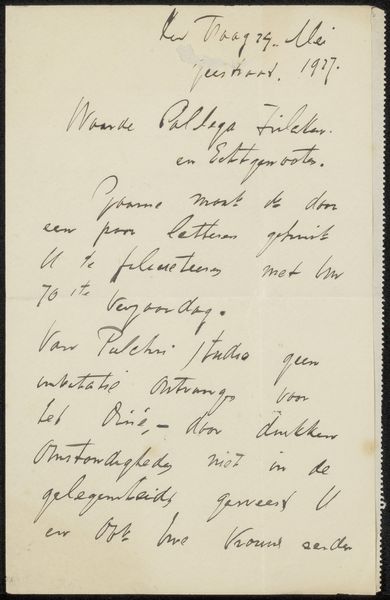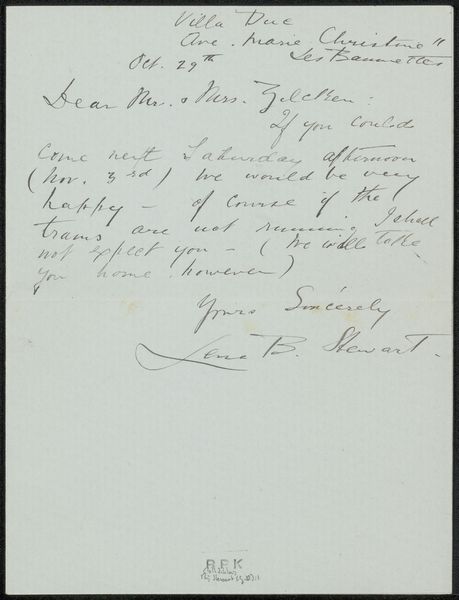
drawing, paper, ink, pen
#
drawing
#
paper
#
ink
#
pen
Copyright: Rijks Museum: Open Domain
Editor: This is "Brief aan Jan Veth," a letter by Isaac Israels, made sometime between 1875 and 1925. It's ink on paper, a simple pen drawing, really. The script itself strikes me as intimate, hurried maybe. What stories do you see within these lines? Curator: Looking at handwriting, it’s crucial to consider not just the words but the visual language—the weight of the strokes, the slant, the flourishes, or the lack thereof. Notice how the characters lean forward almost eagerly, then consider what it suggests. Could that reflect the nature of their relationship, perhaps? What could this immediacy and urgency imply about the content of the letter itself and about how the person who wrote it, in their mindset? Editor: I suppose the angle does make it look like it’s running towards something, perhaps to be understood, maybe requesting something? Do you think the physical act of writing with a pen, the ink on paper, adds a layer of meaning that a typed message would lack? Curator: Absolutely. The hand is so connected to the mind; ink becomes a vehicle for emotion. Calligraphy, in many cultures, is deeply intertwined with spiritual and philosophical meaning. Here, while functional, the rhythm of the pen becomes a fingerprint of the writer's soul. Each loop and line whispers of personality and purpose. What could this handwritten message mean at the time in which it was written? Editor: It feels like a privilege, getting this peek into a personal moment. I now see how something as simple as handwriting can speak volumes! Curator: Exactly. Visual symbols work this way: each holds a meaning that shifts depending on when and by whom they are used, changing its effect on collective memory.
Comments
No comments
Be the first to comment and join the conversation on the ultimate creative platform.
